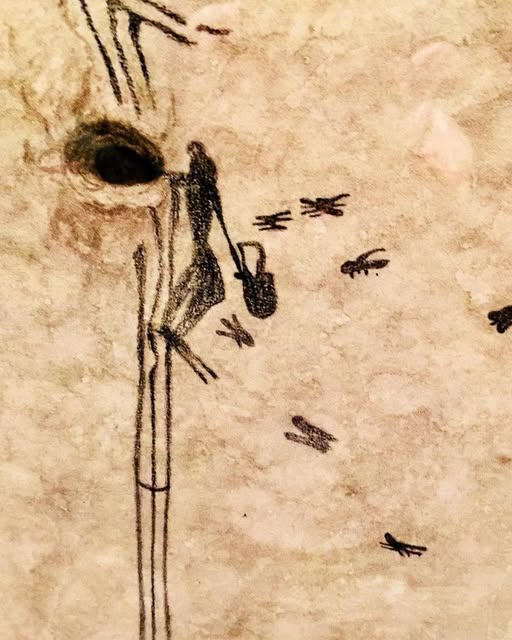
The Sacred Bee: Bees in Caveman Times

Have you ever wondered how beekeeping first began? When the earliest humans, living in caves, discovered that the buzzing hive of bees could provide them with delicious honey and useful wax?

Honey Gathering in Ancient Times
A figure gathers honey from a hive on a cliff face in this 8,000 year old painting discovered in Arana Cave in Spain
There is evidence that mankind was gathering honey in the late Paleolithic times, ten to fifteen thousand years ago. An 8,000-year-old rock painting discovered at Arana Cave near Valencia, Spain, depicts a person climbing a ladder to gather honey from a hive on a cliff face. This picture was made when humans were still in the hunting and gathering stage, before they had begun to farm or domesticate animals. The figure is naked, with no protection from the stings of bees, meaning that it must have taken great courage and endurance to gather this honey. Perhaps even then it was being used for magical or religious purposes. It is possible that this image was created as a talisman for a successful mission; that if the honey gathering was depicted on stone, it would aid and protect the honey gatherer.
After this painting there is a gap in our knowledge of honey gathering lasting thousands of years.
Next month, read all about the many uses and meanings of bees and honey in Ancient Egypt!


